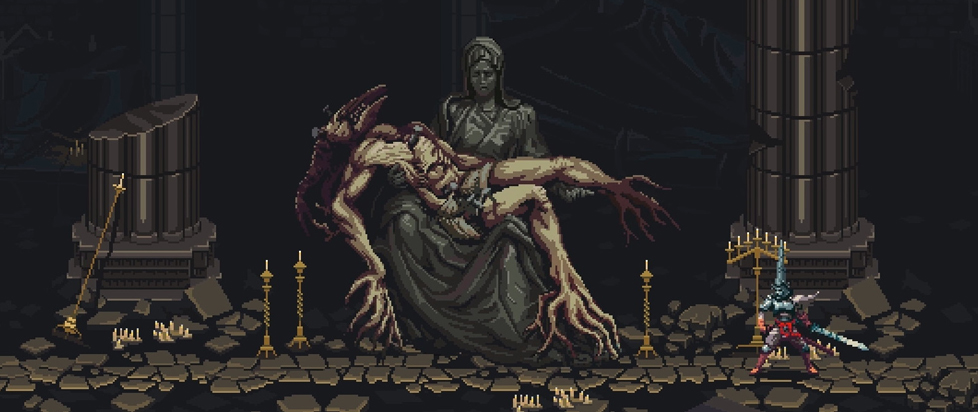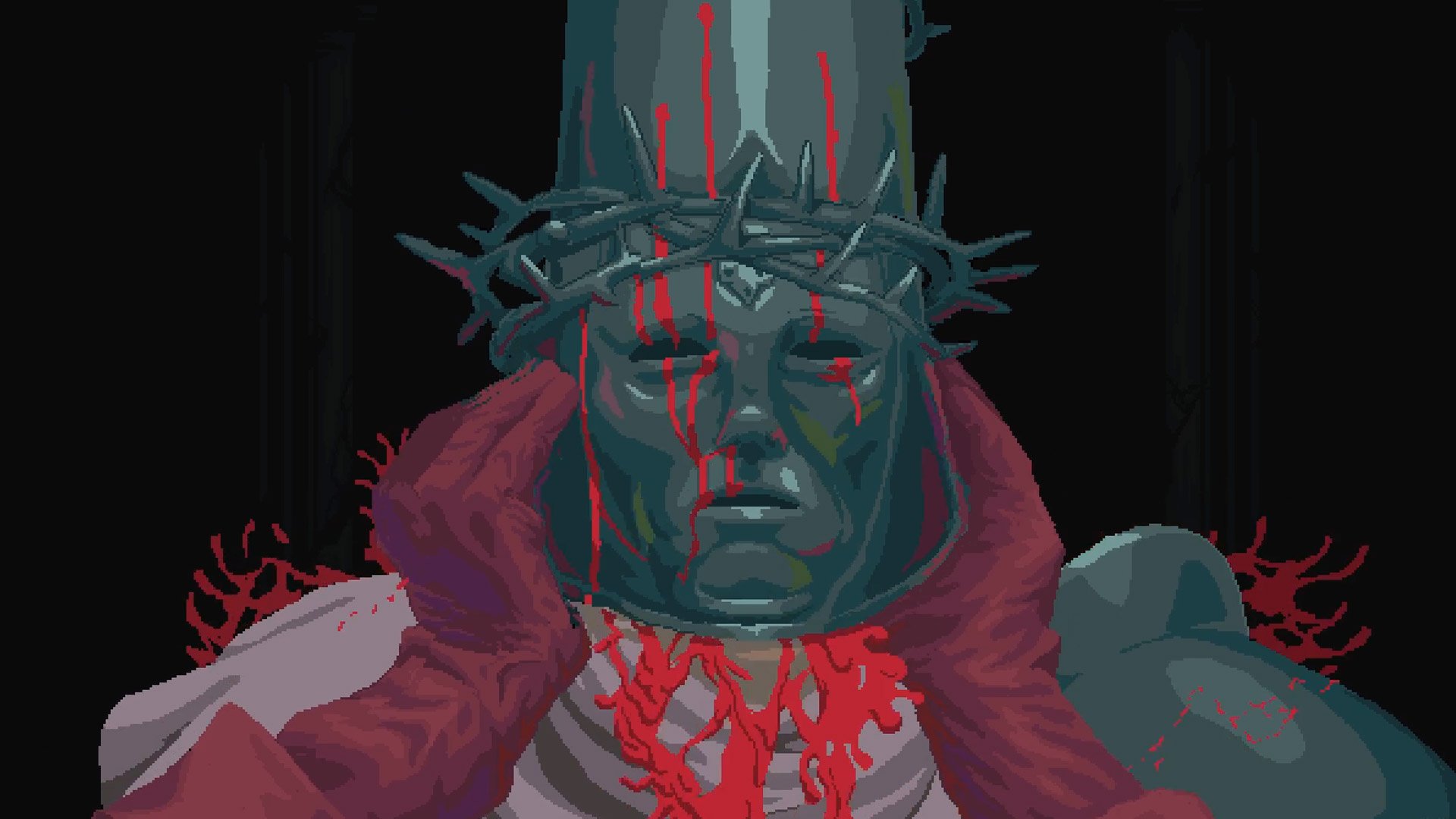
Heaven from the Other Side
 This column is a reprint from Unwinnable Monthly #135. If you like what you see, grab the magazine for less than ten dollars, or subscribe and get all future magazines for half price.
This column is a reprint from Unwinnable Monthly #135. If you like what you see, grab the magazine for less than ten dollars, or subscribe and get all future magazines for half price.
———
Finding deeper meaning beneath the virtual surface.
———
Blasphemous, a 2019 metroidvania from Spanish studio, The Game Kitchen, takes place in a disturbing, tortured wasteland. The countryside your character – called “The Penitent One” – traverses is desolate, windy and plagued; full of long shadows cast by a weak sun. The few towns you come across are made up of dilapidated structures leaning against each other, windows and doors all boarded up, sand and dust piled high against their sides. You wouldn’t immediately think this was a game based, as it is, on Christian ideas, its fictional world extrapolated from biblical scripture, ranging from topics of faith to salvation. Yet in showing us the uglier, more distorted and terrifying side of religious faith, Blasphemous serves as a deeper aesthetic exploration of the mind of the devout than the more typically generated imagery of mainstream Christianity: the harps, the cherubic angels, the kind and bearded gods.
In Umberto Eco’s The Name of The Rose, a murder mystery set in an Italian monastery in the Fourteenth century, Friar William of Baskerville, the novel’s protagonist, describes to his novice, Adso, the purpose of hellish imagery in inspiring faith: “. . . to stimulate piety and terror and fervor in the populace, and obedience to human and divine law, preachers have used distressing words, macabre threats.” He despairs that, “the Italians, thanks to their preachers, risk returning to the ancient superstitions; and they no longer believe in the resurrection of the flesh, but have only a great fear of bodily injuries and misfortunes . . .” After all, what better incentive is there besides the gruesome images of demons torturing lost souls amid brimstone and flame, seemingly right below the feet of your intended audience, to convince them to stick around? Pure faith is a difficult thing; and games like Blasphemous show us its mirror: the stick employed to instill loyalty when the carrot alone seems not to suffice.

The living condition of Europe’s population during the late Middle Ages was certainly helpful toward this end. The wealth that wasn’t concentrated around monarchies (themselves an arm of religious authority) was on display in churches and other religious institutions. Built on the most ideal ground, often towering above the poor hamlets which surrounded them, wrought with gold, stained glass and elaborate frescoes, churches employed wealth to reinforce their sacred status in sharp contrast to the base conditions suffered by most everyone else. Next to these shining beacons, the towns of Europe didn’t look much different than the exaggerated dilapidation of Blasphemous’ setting: poor, mud-splattered hovels for the desperately poor and landless to momentarily shade their heads, in between shifts of backbreaking toil. The creaking, moldering habitations which make the game so memorably creepy to spend time in.
Blasphemous, in all its visual eccentricity is not, then, some groundless fabrication, but instead a quite plausible look into the inner life of a fervently religious person living in dreary times. How easy it might be to glance from your subsistence lifestyle to the royal splendor on display at even often the lowliest of churches, and see a beacon of heavenly salvation amid the squalor and grime of your earthly hell?
When the novice Adso, in The Name of The Rose, first approaches the monastery’s church, he is so overwhelmed by the sculptural relief over its main door depicting saints and sinners alike that he is drawn into a hallucinatory stupor: “. . . stunned (almost) by that sight, uncertain at this point whether I was in a friendly place or in the valley of the last judgment, I was terrified and could hardly restrain my tears, and I seemed to hear (or did I really hear?) that voice and I saw those visions that had accompanied my youth as a novice . . .”
The confusing nature of this encounter is very much by design: “. . . images are the literature of the layman,” Adso acknowledges later. These supernatural-seeming images make a powerful argument for loyalty and obedience, perhaps more than the written word ever could. In his book Baroque & Rococo, Gauvin Alexander Bailey writes: “Church interiors were calculated to overwhelm the faithful and exercise their emotions . . . using illusionism to encourage meditation and break down peoples’ defences.” The power of images was something well understood by the church and frequently employed with calculated precision.
Blasphemous similarly uses its imagery to draw the audience in, just from the other direction. In its representations of biblically-inspired horror: its howling, lightless cliffs; its dungeons crammed with the dripping corpses of low sinners; it gives us a glimpse into the kind of deep-seated fear of hell and damnation which has long supplied the fuel necessary for organized religion to endlessly self-propagate. In this way it serves as an inverted church, one which presents the same message as the chiaroscuro clouds and angels of positive religious art from its gnarly and unseemly underside. “. . . hell is heaven seen from the other side,” Adso thinks to himself in The Name of The Rose. Eco’s story, along with games like Blasphemous, necessarily dwells in this haunting inversion, and is therefore useful in better understanding the sway of religion, and the fervor of its most loyal adherents.

———
Yussef Cole is a writer and a visual artist hailing from the Bronx, NY. He makes images for the screen and also enjoys writing words about the screen’s images.




